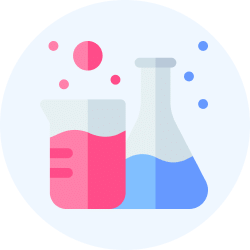Chemistry Exam > Chemistry Videos > Inorganic Chemistry > PYQs: Bioinorganic
PYQs: Bioinorganic Video Lecture | Inorganic Chemistry
FAQs on PYQs: Bioinorganic Video Lecture - Inorganic Chemistry
| 1. What is bioinorganic chemistry? |  |
Ans. Bioinorganic chemistry is the study of the role and behavior of inorganic elements and compounds in biological systems. It investigates how these inorganic components interact with organic molecules to form metalloproteins, metalloenzymes, and other metal-containing biomolecules.
| 2. What are some examples of bioinorganic compounds? |  |
Ans. Some examples of bioinorganic compounds include heme, which is found in hemoglobin and myoglobin and is responsible for oxygen transport in the blood, and chlorophyll, which is involved in photosynthesis. Other examples include iron-sulfur clusters, zinc finger proteins, and metalloenzymes like carbonic anhydrase.
| 3. How do metal ions play a role in bioinorganic chemistry? |  |
Ans. Metal ions play various roles in bioinorganic chemistry. They can act as cofactors in metalloenzymes, where they assist in catalyzing important biochemical reactions. Metal ions can also bind to proteins or nucleic acids, altering their structure and function. Additionally, metal ions are involved in electron transfer processes and regulate cellular processes such as gene expression.
| 4. What techniques are used in bioinorganic chemistry research? |  |
Ans. Bioinorganic chemistry research often utilizes techniques such as X-ray crystallography, nuclear magnetic resonance (NMR) spectroscopy, mass spectrometry, and electron paramagnetic resonance (EPR) spectroscopy. These techniques help to determine the structures of metal-containing biomolecules and study their properties and interactions in detail.
| 5. What are the applications of bioinorganic chemistry? |  |
Ans. Bioinorganic chemistry has various applications in medicine, agriculture, and environmental science. In medicine, it contributes to the development of metal-based drugs for treating diseases such as cancer, arthritis, and bacterial infections. In agriculture, bioinorganic chemistry helps in understanding the role of essential elements in plant growth and developing fertilizers. In environmental science, it investigates the interactions of metal ions with pollutants and their impact on ecosystems.
Related Searches




















